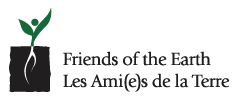Help Save the Bees – the Wild, Native Bees Need You

 You want to help save the bees? Guess who is waiting for you in your garden – and it’s not me, Bea! You might have leaf-cutters, mining bees, bumblebees or sweat bees and lots more. These are wild, native bees, and there are over 825 species in Canada that need your help! Leave the hives to the beekeepers and farmers and help save wild, native bees.
You want to help save the bees? Guess who is waiting for you in your garden – and it’s not me, Bea! You might have leaf-cutters, mining bees, bumblebees or sweat bees and lots more. These are wild, native bees, and there are over 825 species in Canada that need your help! Leave the hives to the beekeepers and farmers and help save wild, native bees.
Here’s how…
 Make your garden safe and hospitable for bees –
Make your garden safe and hospitable for bees –
and designate it a “Bee & Bee”
Protect existing habitat in your yard. In other words: LET IT BEE! Leave stems from dead plants; cleaning them up too early means you might be composting solitary bees using them as nesting habitat. Where possible, leave cavities in the ground (left by rodents) or in trees for our only wild “social” bees – bumblebees to nest in. These cavities also provide a good place for bees to hide during storms.
 Grow more flowers, shrubs and trees to provide nectar and pollen as food for bees and other pollinators. Plan for a continuous succession of nectar-and pollen-producing plants flowering from spring through fall. Plant in clumps and plant different flower colours, shapes and heights. Native bees are attracted to white, yellow, blue and purple flowers.
Grow more flowers, shrubs and trees to provide nectar and pollen as food for bees and other pollinators. Plan for a continuous succession of nectar-and pollen-producing plants flowering from spring through fall. Plant in clumps and plant different flower colours, shapes and heights. Native bees are attracted to white, yellow, blue and purple flowers.
Download a copy of the “Bee & Bee” sign and put it up in your yard. Let your neighbours know what you’re doing to save the bees!
Say No to Neonics
Refuse to buy plants treated with neonicotinoids and other systemic pesticides – they’re very harmful to all bees. Neonics get inside plants, making nectar and pollen toxic to bees. Even low levels of exposure can decrease bees’ abilities to forage, navigate, and communicate. The pesticides hinder bees’ memory, suppress their immune systems and increase their vulnerability to disease and pests. Some neonics can be 5,000 to 10,000 times more acutely toxic to bees than the pesticide DDT.
Ask at your garden centre – are their plants neonic-free? If not, or if they don’t know, tell them you won’t be buying there. Download and print copies of the Say No To Neonics post card to leave at garden centres or share a digital card with your friends and family over Facebook, Twitter or e-mail.
Don’t forget to share your plant buying experiences with Friends of the Earth, and we’ll feature you on our Garden Centre Stories page!
 Lend your voice!
Lend your voice!
Sign the petition to protect at-risk wild, native bees
An important committee of scientists, the Committee on the Status of Endangered Wildlife in Canada (COSEWIC) have recommended six wild bees for listing as endangered under our Species at Risk Act (SARA). With your help we can persuade the federal government to provide vital recovery action for these important wild bees: Gypsy Cuckoo Bumble Bee, Western Bumble Bee occidentalis, Western Bumble Bee mckayi, Macropis Cuckoo Bee, Yellow-banded Bumble Bee, and the Sable Island Sweat Bee.
It’s time to get recovery work underway by officially listing these six wild bees under the Species at Risk Act – sign the petition now.
 The 2017 Great Canadian Bumblebee Count
The 2017 Great Canadian Bumblebee Count
In July and August, we’ll hold the second Great Canadian Bumblebee Count. Interested in learning more about how you can participate? Sign up now so we can send you news and updates. If you’re taking advantage of the Canada 150 free visits to National Parks, why not add the Bumblebee Count to your plans?





